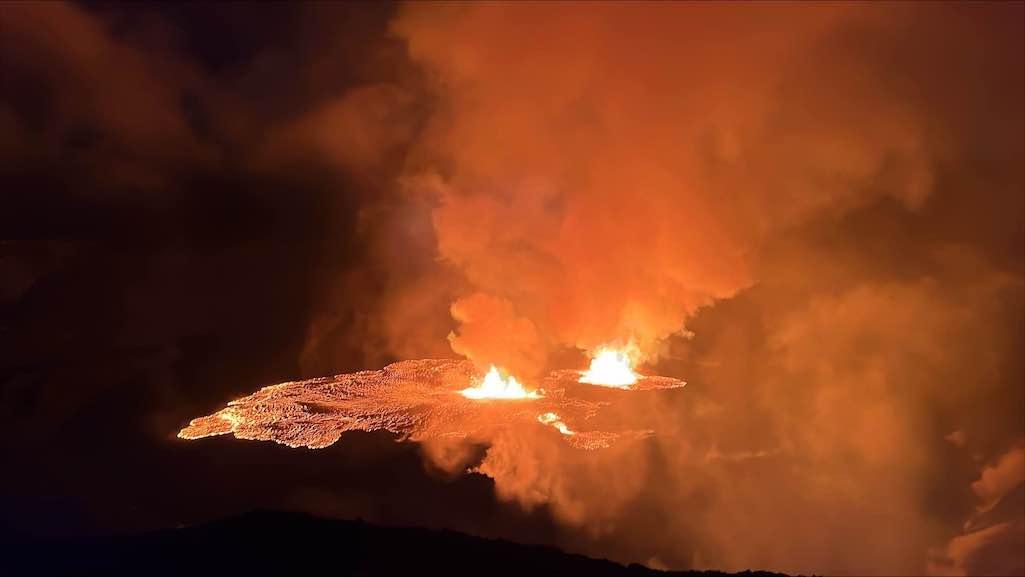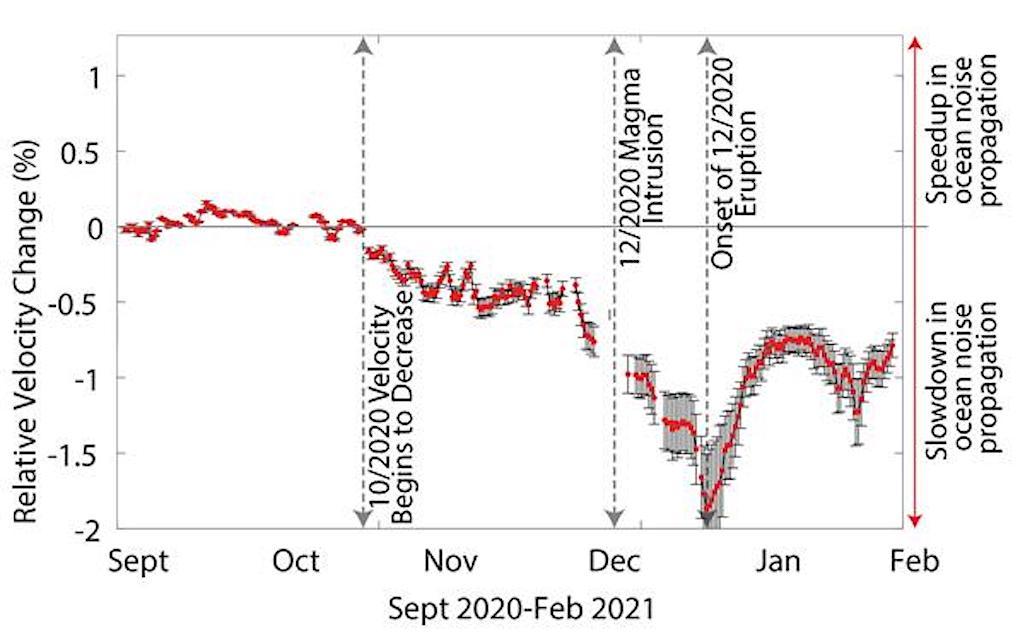
The Kīlauea volcano at Hawai'i Volcanoes National Park burst into an eruption early on June 7, 2023/USGS
Editor's note: Volcano Watch is a weekly article and activity update written by U.S. Geological Survey Hawaiian Volcano Observatory scientists and affiliates.
Ocean swells are constantly occurring across the Earth’s oceans. These swells interact with the ocean crust below, creating continuous ocean noise that travels all over the Earth, including through our active volcanoes here in Hawaii. Because ocean noise signals are always being generated, scientists can use these seismic sources to identify small changes occurring in the Earth’s crust over time.
In climates that experience all four seasons, scientists have shown that ocean noise travels through these regions faster in times when snowpack is present and slower in times when the snow has melted. This winter speedup is due to the overlying snowpack compressing the subsurface and closing any fractures below it.
When the snow thaws, the subsurface is no longer compressed, the fractures open again, and the snow melt percolates into these fracture systems. This causes ocean noise to travel through these regions more slowly in the spring and summer months. Similarly, in climates that experience excessive rainfall, such as Hawaii, such precipitation diffuses into the ground, opening fractures and cracks, and causing slowdowns in ocean noise propagation speeds.
Magma moving under active volcanoes can cause similar opening and closing of fracture systems resulting in changes in the velocity at which ocean noise signals travel through a volcano. Scientists at the Hawaiian Volcano Observatory are developing new techniques that utilize such velocity changes to understand what is happening beneath the surface of volcanoes on the Island of Hawaiʻi.
From September to mid-October 2020, the velocity of ocean noise in Kīlauea summit region remained fairly constant. However, by mid-October 2020, velocities in the summit region began to decrease rapidly. When magma migrates beneath the surface, it opens cracks and fractures in the region immediately above it. The opening of these fracture systems, as well as the influx of the magma itself, causes a slowdown in the propagation speed of ocean noise signals through that region.
Scientists at the Hawaiian Volcano Observatory have concluded that magma began to move from deeper depths beneath Kīlauea summit by mid-October 2020. By early December 2020, velocities began to decrease at a more dramatic rate suggesting a more rapid inflow of magma into Kīlauea summit. At that point, earthquake and ground deformation patterns beneath the summit indicated that a small intrusion of magma had occurred.
By mid-December 2020, the velocity of ocean noise traveling through Kīlauea’s summit decreased even more, indicating the continued invasion of magma into the volcano.
Finally, on December 20, 2020, at approximately 9:30 p.m. HST, the eruption at Kīlauea’s summit began. Following the onset of this eruption, as seen in the figure, a dramatic increase in the propagation speed of ocean noise signals through the summit region was observed. As magma was removed from the shallow storage reservoir, by the outpouring of lava, the region above it deflated. This deflation causes the closure of fractures within the shallow summit, and a resulting increase in the velocity of ocean noise through the summit.
This example demonstrates how monitoring for changes in ocean noise velocity could potentially be used to aid in forecasting volcanic activity. Hawaiian Volcano Observatory scientists are working to better understand this process and apply it as a real-time monitoring tool at both Kīlauea and Mauna Loa volcanoes.




Add comment